Potrebujeme váš súhlas na využitie jednotlivých dát, aby sa vám okrem iného mohli ukazovať informácie týkajúce sa vašich záujmov. Súhlas udelíte kliknutím na tlačidlo „OK“.
ASTM D6421-99a(2014)
Standard Test Method for Evaluating Automotive Spark-Ignition Engine Fuel for Electronic Port Fuel Injector Fouling by Bench Procedure (Includes all amendments And changes 12/28/2018).
Automaticky preložený názov:
Štandardná skúšobná metóda pre hodnotenie Automotive zážihového motora Palivo pre elektronické Port vstrekovače paliva znečisťovaním Bench poriadku
NORMA vydaná dňa 1.10.2014
Informácie o norme:
Označenie normy: ASTM D6421-99a(2014)
Poznámka: NEPLATNÁ
Dátum vydania normy: 1.10.2014
Kód tovaru: NS-35082
Počet strán: 10
Približná hmotnosť: 30 g (0.07 libier)
Krajina: Americká technická norma
Kategória: Technické normy ASTM
Kategórie - podobné normy:
Anotácia textu normy ASTM D6421-99a(2014) :
Keywords:
base fuel, bench test, deposit control additive, deposits (in internal combustion engines), electronic port fuel injector (PFI), flow rate, hot soak, injector fouling, pintle, spark-ignition engine fuel, test fuel,, ICS Number Code 27.060.10 (Liquid and solid fuel burners)
Doplňujúce informácie
| Significance and Use | ||||||||||
|
5.1 Driveability problems in PFI automobiles were first reported in 1984. Deposits are prone to form on the metering surfaces of pintle-type electronic fuel injectors. These deposits reduce fuel flow through the metering orifices. Reductions in metered fuel flow result in an upset in the air-fuel ratio, which can affect emissions and driveability. When heavy enough, these deposits can lead to driveability symptoms, such as hesitation, hard starting, or loss of power, or a combination thereof, that are easily noticed by the average driver and that lead to customer complaints. The mechanism of the formation of deposits is not completely understood. It is believed to be influenced by many factors, including driving cycle, engine and injector design, and composition of the fuel. The procedure in this test method has been found to build deposits in PFIs on a consistent basis. This procedure can be used to evaluate differences in base fuels and fuel additives. A study of PFI fouling was conducted in both the bench test and the vehicle test procedures to obtain a correlation. The vehicle tests were conducted as described in Test Method D5598. The tests were conducted on several base gasolines, with and without additives blended into these base fuels. The PFI bench test proved to be reliable, repeatable, and a good predictor of PFI fouling in test vehicles. 5.1.1 State and Federal Legislative and Regulatory Action—Legislative and regulatory activity, primarily by the state of California (see 2.3) and the federal government (see 2.4), necessitate the acceptance of a standard test method to evaluate the PFI deposit-forming tendency of an automotive spark-ignition engine fuel. 5.1.2 Relevance of Results—The operating conditions and design of the laboratory apparatus used in this test method may not be representative of a current vehicle fuel system. These factors must be considered when interpreting results. 5.2 Test Validity: 5.2.1 Procedural Compliance—The test results are not considered valid unless the test is completed in compliance with all requirements of this test method. Deviations from the parameter limits presented in Section 10 will result in an invalid test. Engineering judgment shall be applied during conduct of the test method when assessing any anomalies to ensure validity of the test results. |
||||||||||
| 1. Scope | ||||||||||
|
1.1 This test method covers a bench test procedure to evaluate the tendency of automotive spark-ignition engine fuel to foul electronic port fuel injectors (PFI). The test method utilizes a bench apparatus equipped with Bosch injectors specified for use in a 1985-1987 Chrysler 2.2-L turbocharged engine. This test method is based on a test procedure developed by the Coordinating Research Council (CRC) for prediction of the tendency of spark-ignition engine fuel to form deposits in the small metering clearances of injectors in a port fuel injection engine (see CRC Report No. 592).2 1.2 The test method is applicable to spark-ignition engine fuels, which may contain antioxidants, corrosion inhibitors, metal deactivators, dyes, deposit control additives, demulsifiers, or oxygenates, or a combination thereof. 1.3 The values stated in SI units are to be regarded as the standard. Approximate inch-pound units are shown in parentheses for information purposes only. 1.4 This standard does not purport to address all of the safety concerns, if any, associated with its use. It is the responsibility of the user of this standard to establish appropriate safety and health practices and determine the applicability of regulatory limitations prior to use. Specific precautionary statements are given throughout this test method. Note 1: If there is any doubt as to the latest edition of Test
Method D6421, contact ASTM
International Headquarters. Other properties of significance to
spark-ignition engine fuel are described in Specification
D4814.
|
||||||||||
| 2. Referenced Documents | ||||||||||
|
Podobné normy:
Historická
1.10.2014
Historická
1.10.2013
Historická
1.10.2014
Historická
1.10.2010
Historická
1.5.2011
Historická
15.5.2014
Odporúčame:
Aktualizácia technických noriem
Chcete mať istotu, že používate len platné technické normy?
Ponúkame Vám riešenie, ktoré Vám zaistí mesačný prehľad o aktuálnosti noriem, ktoré používate.
Chcete vedieť viac informácií ? Pozrite sa na túto stránku.


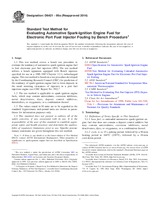
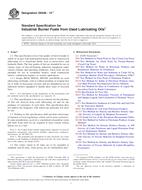 ASTM D6448-14e1
ASTM D6448-14e1 ASTM D6468-08(2013)..
ASTM D6468-08(2013)..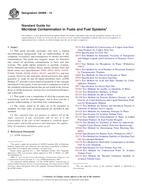 ASTM D6469-14
ASTM D6469-14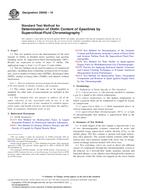 ASTM D6550-10
ASTM D6550-10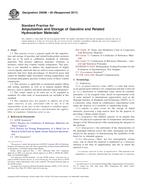 ASTM D6596-00(2011)..
ASTM D6596-00(2011)..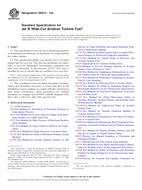 ASTM D6615-14a
ASTM D6615-14a
 Cookies
Cookies
